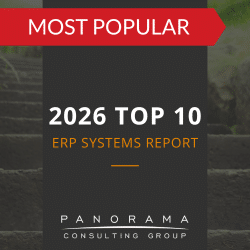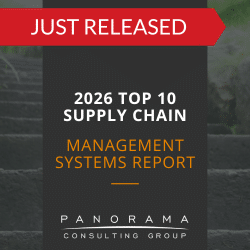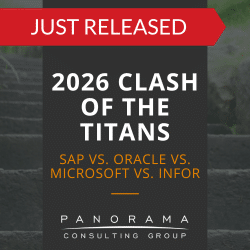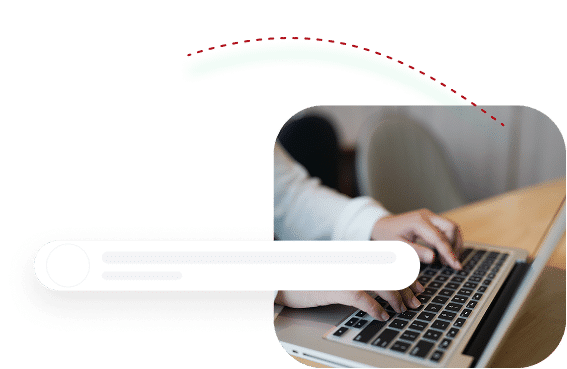Does your organization operate as part of a greater supply chain network? If so, do you have a robust data solution that consolidates data and improves visibility levels?
This is where network resource planning (NRP) comes in. NRP is especially important when you find that an enterprise resource planning (ERP) platform doesn’t satisfy all your business needs.
But what is NRP, and what kind of benefits does it provide? Today, we’re looking at all the information you need to know.
The New Need for NRP
Technology-wise, NRP is a relatively new term.
In contrast, it’s been about five decades since the first ERP solution debuted, changing the way organizations capture, manage, and share in-house data.
Since then, the business landscape has shifted significantly. Companies once considered competitors are now reaching across lines and collaborating to achieve the benefits of digital transformation.
Most traditional enterprises are expected to follow suit, with the notion of a standalone business slowly fading away.
As companies become more interconnected, stakeholders need the ability to communicate with one another in real-time. They also need access to shared files that all authorized employees can access, even if they don’t work in the same building or even for the same company.
This is why NRP has been increasing in popularity.
The 2025 ERP Report
72.6% of respondents said they've already deployed AI at their organizations. Learn about AI adoption and other ERP trends by downloading our latest report.
How Does Network Resource Planning Work?
A network resource planning system is used by a network of organizations to exchange value, share data, and automate cross-industry processes.
NRP operates on a much larger scale than ERP, so it’s even more important to track user activity to ensure data security and reduce operational risk.
Consider how complicated security becomes when thousands of employees from a handful of different companies have access to the same files and data.
Enter, the blockchain.
If you’re familiar with cryptocurrency, you may already know how the blockchain works. This is a system of recording information in a way that makes it nearly impossible to hack, cheat, or even change the system. Put simply, it’s a digital ledger of transactions that can be duplicated and distributed across an entire network of linked computer systems.
Just as the blockchain is used to facilitate the movement of Bitcoin and other crypto assets, businesses can use it to record and manage NRP activity. Companies like WeTrade and Marco Polo are already leveraging blockchain technology to expand ERP functionality into NRP territory.
In every NRP, the blockchain forms the foundational infrastructure of the network.
To date, early adopters of NRP are primarily using it to facilitate basic supply chain functions, such as:
- Inventory management
- Record reconciliation
- Financial settlements
4 Benefits of NRP Systems
1. Creates a Basis of Trust
When network partners start accessing shared files, business leaders may raise concerns about data management. How can you be sure that critical information is safe and secure, especially when there are multiple, competing stakeholders working together?
With the blockchain, everyone accesses a single source, so if one person makes a change, everyone knows it in real-time because the update is applied across the network. This eliminates the need for data duplication across computer systems. At the same time, you don’t need to assign specialized interfaces to each stakeholder’s enterprise applications.
When everyone is working together, and there’s only one source of truth, this can go a long way toward building partner trust and creating a more collaborative network.
2. Expands Automation Possibilities
You may already rely on ERP software to automate many of your back-office tasks, such as accounting or HR functions. Yet, these platforms are often limited in scope, and many are unable to successfully automate more complex workflows.
An NRP system is much larger and more robust. It operates outside of the parameters of standard ERP software and can automate some of the processes that ERP can’t.
3. Standardizes Processes
With ERP, some users might have certain protocols, while others have different ones. If everyone is trying to work at the same time, these crossed wires can lead to bottlenecks and slowdowns.
This isn’t the case with the blockchain. In NRP, everyone is working from the same set of processes, so the stakeholder experience is unified and consistent, and operations are always flowing.
4. Solves Supply Chain Issues
An ERP system is excellent at helping business leaders identify and solve problems within their own organization. Yet, it can’t always offer the same benefits to your partners, distributors, suppliers, or anyone else associated with your supply chain.
If an issue exists outside of your operational parameters, it’s sometimes difficult to tackle it with an ERP system alone. In such cases, minor incidents can snowball into major concerns.
In contrast, an NRP is supply-chain-wide, so users can address and solve issues on a much higher, more impactful level.
Anticipated Business Challenges of NRP
As NRPs continue to gain traction, forward-thinking companies are anticipating the business challenges they could pose and how to work around them.
A few of the top concerns include:
- Selecting the right approach (technology-first vs. business-first)
- Identifying target stakeholders for the network
- Building a pilot ecosystem to test the viability
- Defining an intended governance structure
- Encouraging stakeholders across other industries to participate
Could Network Resource Planning be Right for Your Company?
If you’ve been thinking about improving your processes and considering the possibility of implementing new technology, then network resource planning is a concept you need to understand.
While we still have a ways to go before network resource planning will be able to replace certain ERP functions, blockchain-based networks appear to be the way of the future. This is especially the case when the technology is combined with other advanced data analytics tools, such as IoT and AI.
Moving forward, more and more large-scale supply chain partners will implement NRP to manage and track shared operational data. Will you be among them?
Our enterprise software consulting team can assess your current business landscape and determine if NRP could bring value to your organization. Contact us below for a free consultation.













